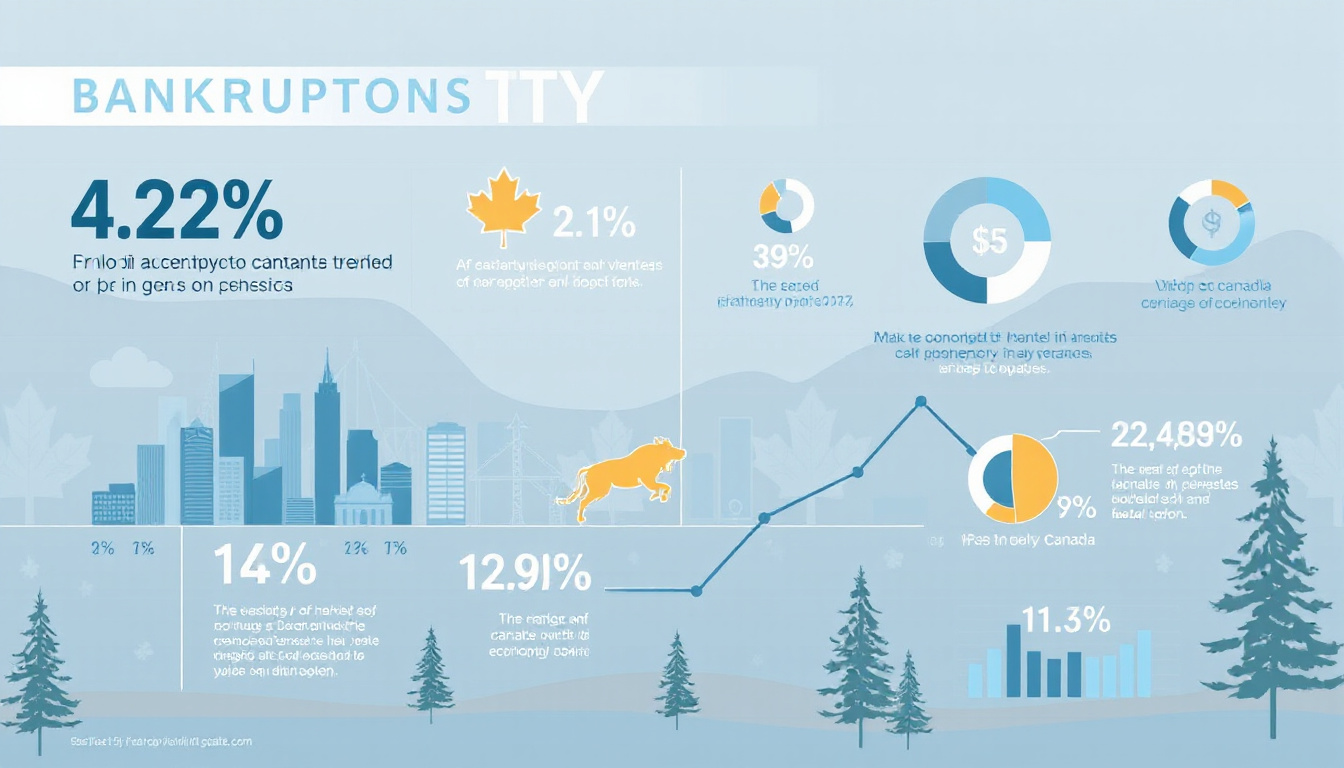In Canada, approximately 1 in every 400 adults filed for bankruptcy in 2022, highlighting a crucial trend in the country’s financial landscape. Recent data from the Office of the Superintendent of Bankruptcy indicates that a total of 117,000 individuals filed for bankruptcy last year, a 20% increase from the previous year. This statistic underscores the growing economic pressures faced by Canadians and serves as a significant indicator of financial instability in households across the nation.
As we delve deeper into the bankruptcy statistics in Canada, several factors emerge as crucial to understanding this phenomenon: an analysis of bankruptcy trends, demographic insights into who is most affected by these filings, the impact of broader economic conditions, and predictions for future bankruptcy rates. Each aspect paints a detailed picture of bankruptcy in Canada, helping journalists, bloggers, and policymakers better understand the implications of these statistics.

Key Takeaways
- Bankruptcy filings in Canada have shown significant trends influenced by various economic conditions.
- Demographic insights reveal distinct patterns in who is filing for bankruptcy across different age groups and regions.
- Economic factors such as recessions and employment rates have a direct impact on the frequency of bankruptcy cases in Canada.
- Understanding the implications of these statistics can help policymakers address the root causes of bankruptcy.
- Future predictions suggest that ongoing economic changes may alter bankruptcy trends in Canada, calling for proactive measures.
Overview of Bankruptcy Trends in Canada
As of 2023, approximately 130,000 Canadians filed for bankruptcy, highlighting a growing concern regarding financial stability in the country. This marks a slight increase of
2.4% from the previous year, according to the Office of the Superintendent of Bankruptcy Canada. The increase in bankruptcy filings reflects ongoing economic pressures such as rising living costs and increasing interest rates, which are pushing many households to seek relief from overwhelming debt. Additionally, a significant 60% of these bankruptcies were filed by individuals aged 25 to 44, pointing to younger Canadians facing financial challenges as they navigate housing, education, and job market uncertainties. Understanding these bankruptcy statistics in Canada is crucial for policymakers, financial advisors, and consumers alike to address the underlying causes and develop effective strategies for financial health.
Demographic Insights into Bankruptcy Filings
In recent years, approximately 120,000 Canadians file for bankruptcy annually, highlighting a significant concern regarding financial stability in the country. According to a 2022 report from the Office of the Superintendent of Bankruptcy Canada, the overall bankruptcy rate has shown a gradual increase, with certain demographic groups, including individuals aged 25 to 34, making up a notable percentage of these filings. Understanding these bankruptcy statistics in Canada sheds light on pressing issues such as economic challenges and the need for effective debt relief solutions. Moreover, the report indicates that the majority of filers are single individuals, often facing job instability or overwhelming student debt, pointing to the necessity for targeted financial education and resources.
‘In the midst of chaos, there is also opportunity.’ – Sun Tzu

Impact of Economic Factors on Bankruptcy Rates
In 2023, approximately 16,000 Canadians filed for bankruptcy, highlighting a concerning trend in our economy as economic instability continues to impact financial security. Bankruptcy statistics in Canada illustrate the ongoing challenges faced by many households, with the rate of bankruptcies showing a notable increase of 7% compared to the previous year, according to data from the Office of the Superintendent of Bankruptcy Canada. This rise can be attributed to various economic factors, including inflation, rising interest rates, and increased living costs, which have placed significant pressure on Canadian families. Unemployment rates also play a crucial role; with several regions experiencing higher job losses, the likelihood of individuals resorting to bankruptcy grows. Understanding these statistics is vital for policymakers and financial advisors, as they reflect broader economic challenges and the need for effective debt relief measures.
Future Implications and Predictions for Canadian Bankruptcy Statistics
As of 2023, approximately
5.3 new bankruptcies per 1,000 adults were recorded in Canada, highlighting a concerning trend in personal financial distress (Office of the Superintendent of Bankruptcy Canada). Looking ahead, it is projected that bankruptcy statistics in Canada will continue to fluctuate, with expectations of a possible increase due to rising interest rates and inflation. The Bank of Canada recently indicated that households are increasingly feeling the pressure of debt, with nearly 35% of Canadians reporting they are worse off financially compared to last year. Analysts predict that by 2025, the total annual bankruptcies may rise by 10-15%, as more Canadians struggle to manage their financial obligations in the wake of economic uncertainties and increasing living costs. These predictions underscore the importance of understanding not just current bankruptcy statistics, but also the economic factors contributing to these trends.
